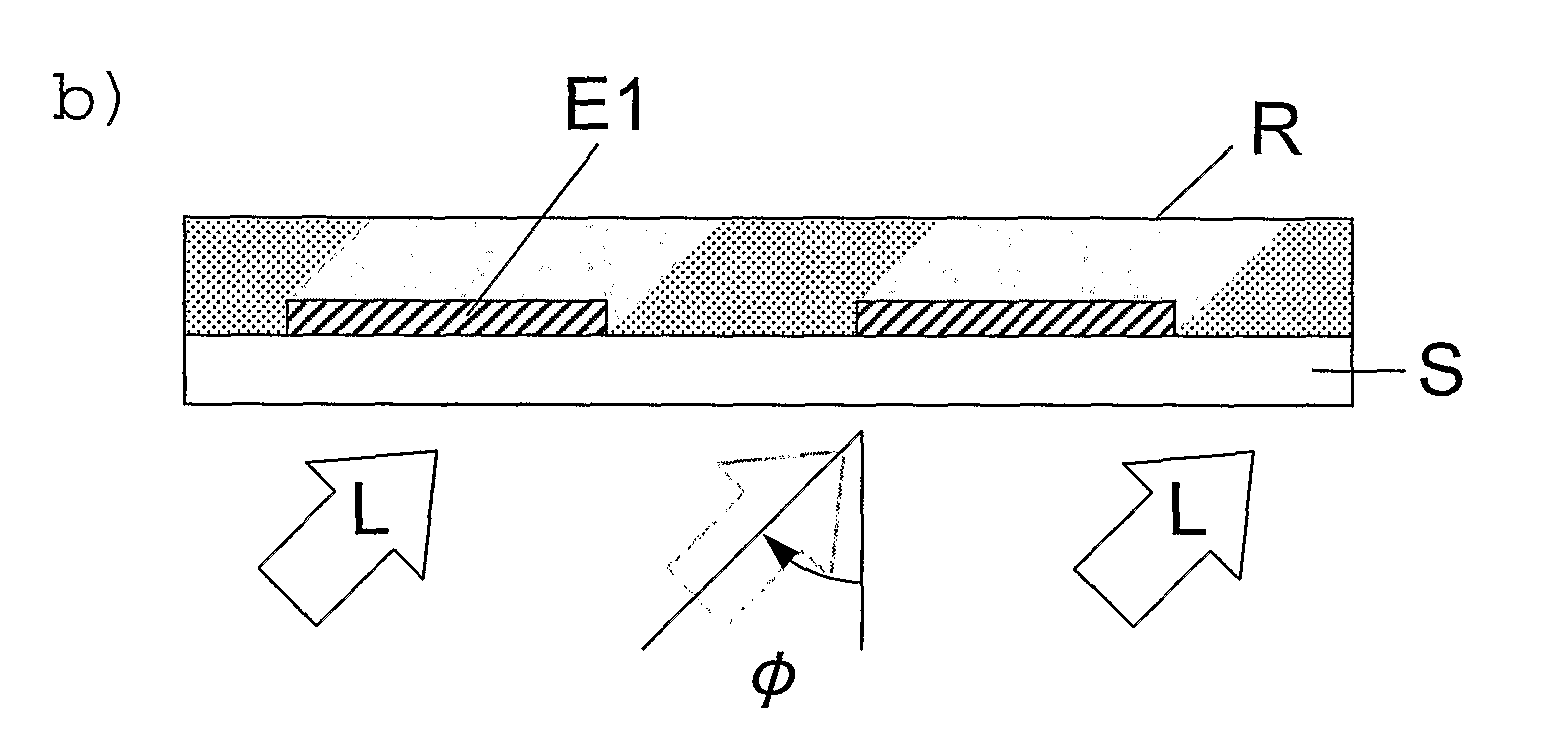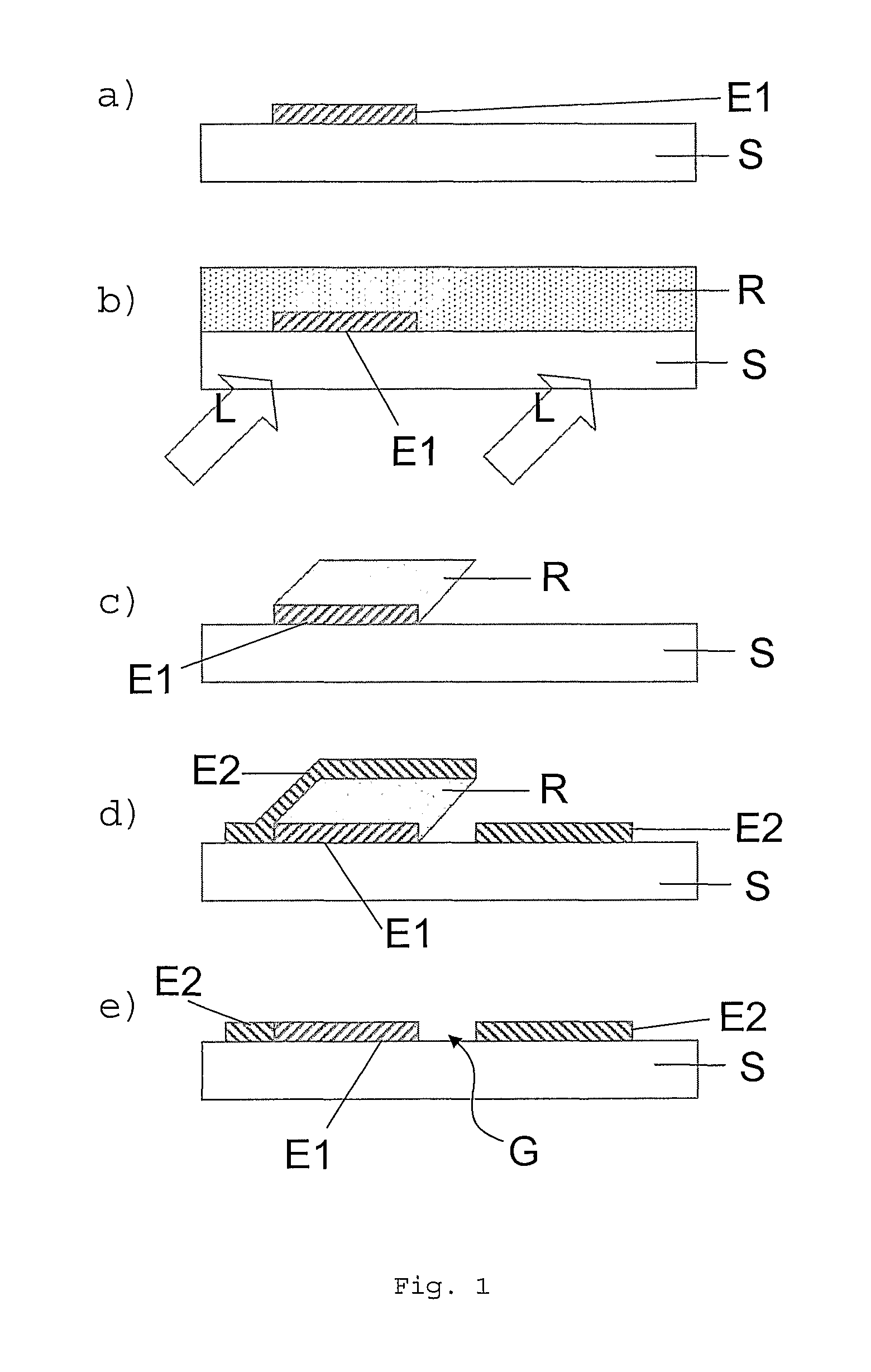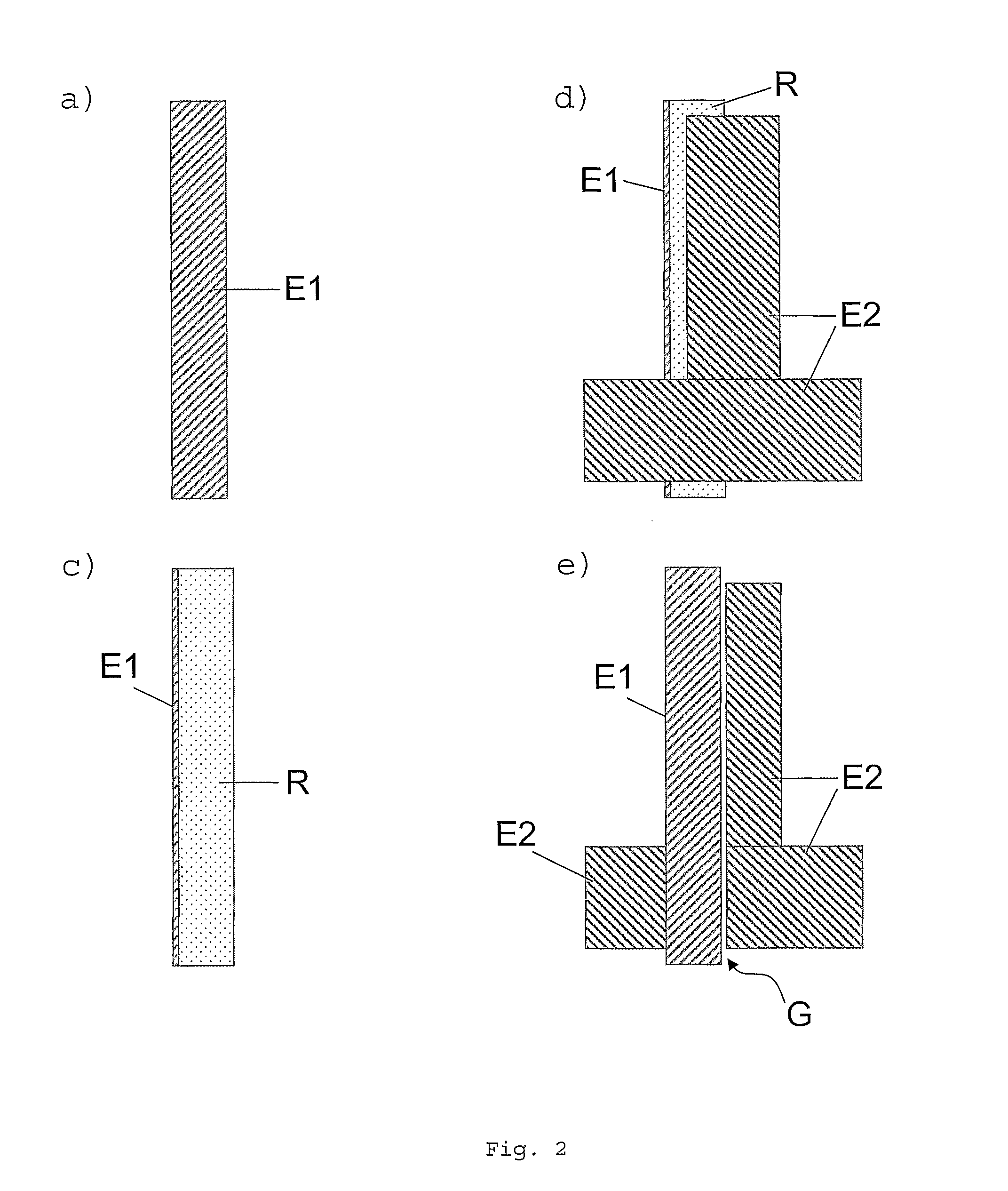Method for forming a pattern on a substrate and electronic device formed thereby
a technology of electronic devices and substrates, applied in the direction of solid-state devices, semiconductor devices, thermoelectric devices, etc., can solve the problems of incompatibility with continuous in-line manufacturing, high cost of required equipment, and the resolution of the current 20-micrometer-scale device is limited, so as to achieve low cost and low cost
- Summary
- Abstract
- Description
- Claims
- Application Information
AI Technical Summary
Benefits of technology
Problems solved by technology
Method used
Image
Examples
Embodiment Construction
[0038]FIGS. 1 and 2 show schematic representations of the method according to the invention. In a first step (FIGS. 1a and 2a) the first layer E1 of an opaque material is deposited on the upper surface of a substrate S. The substrate S is at least partially transparent, in particular semi-transparent, to a light beam L, the light beam preferably comprising or consisting of UV-radiation which is later on needed to expose a photosensitive layer R. The first layer E1 is non-transparent to the light beam L, in particular to UV-radiation. The material of the first layer E1 can for example be an electrical conductor, the first layer E1 then forming an electrode. Suitable pattering techniques such as, for example, so called shadow mask evaporation can be employed for forming the first layer E1 into its desired shape. Preferably additive pattering techniques, which are compatible with roll-to-roll fabrication such as pattering techniques including gravure and ink-jet printing, are employed ...
PUM
| Property | Measurement | Unit |
|---|---|---|
| lengths | aaaaa | aaaaa |
| lengths | aaaaa | aaaaa |
| channel length | aaaaa | aaaaa |
Abstract
Description
Claims
Application Information
 Login to View More
Login to View More - R&D
- Intellectual Property
- Life Sciences
- Materials
- Tech Scout
- Unparalleled Data Quality
- Higher Quality Content
- 60% Fewer Hallucinations
Browse by: Latest US Patents, China's latest patents, Technical Efficacy Thesaurus, Application Domain, Technology Topic, Popular Technical Reports.
© 2025 PatSnap. All rights reserved.Legal|Privacy policy|Modern Slavery Act Transparency Statement|Sitemap|About US| Contact US: help@patsnap.com



